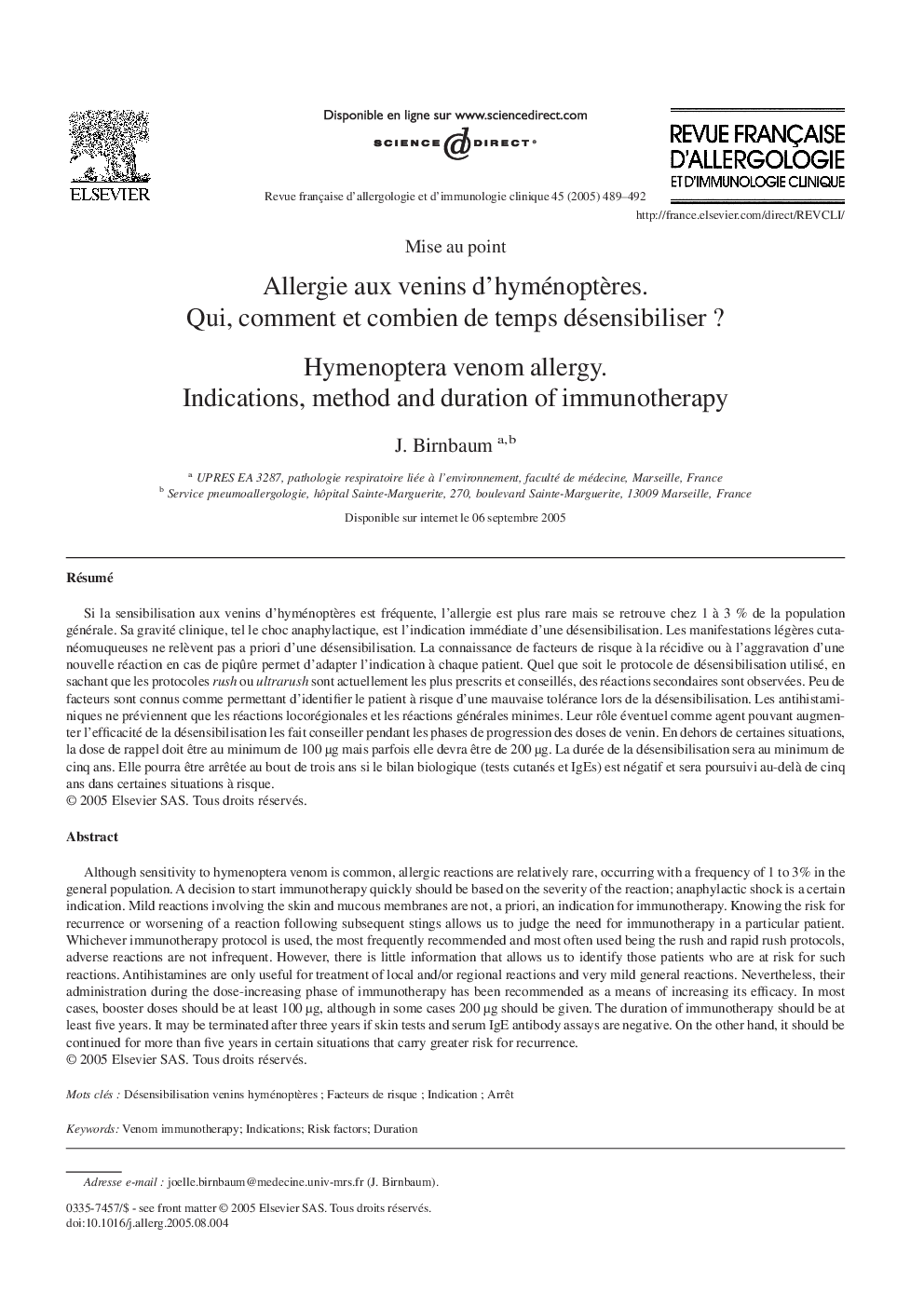| Article ID | Journal | Published Year | Pages | File Type |
|---|---|---|---|---|
| 9100182 | Revue Française d'Allergologie et d'Immunologie Clinique | 2005 | 4 Pages |
Abstract
Although sensitivity to hymenoptera venom is common, allergic reactions are relatively rare, occurring with a frequency of 1 to 3% in the general population. A decision to start immunotherapy quickly should be based on the severity of the reaction; anaphylactic shock is a certain indication. Mild reactions involving the skin and mucous membranes are not, a priori, an indication for immunotherapy. Knowing the risk for recurrence or worsening of a reaction following subsequent stings allows us to judge the need for immunotherapy in a particular patient. Whichever immunotherapy protocol is used, the most frequently recommended and most often used being the rush and rapid rush protocols, adverse reactions are not infrequent. However, there is little information that allows us to identify those patients who are at risk for such reactions. Antihistamines are only useful for treatment of local and/or regional reactions and very mild general reactions. Nevertheless, their administration during the dose-increasing phase of immunotherapy has been recommended as a means of increasing its efficacy. In most cases, booster doses should be at least 100 μg, although in some cases 200 μg should be given. The duration of immunotherapy should be at least five years. It may be terminated after three years if skin tests and serum IgE antibody assays are negative. On the other hand, it should be continued for more than five years in certain situations that carry greater risk for recurrence.
Related Topics
Health Sciences
Medicine and Dentistry
Anesthesiology and Pain Medicine
Authors
J. Birnbaum,
